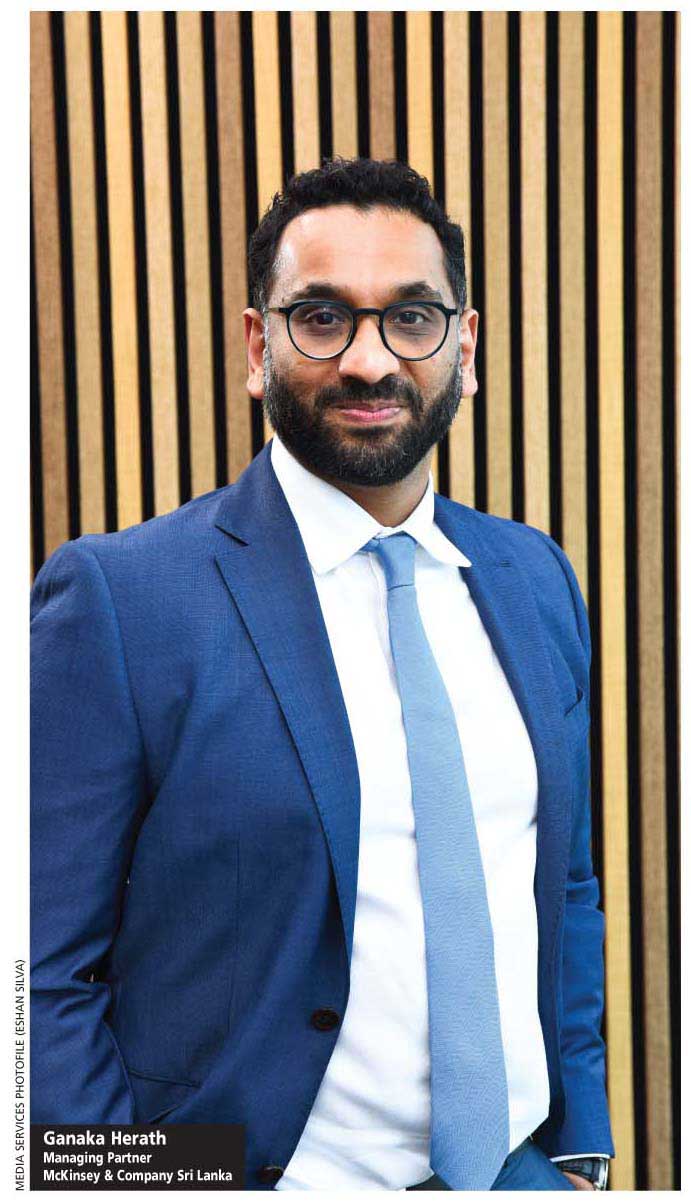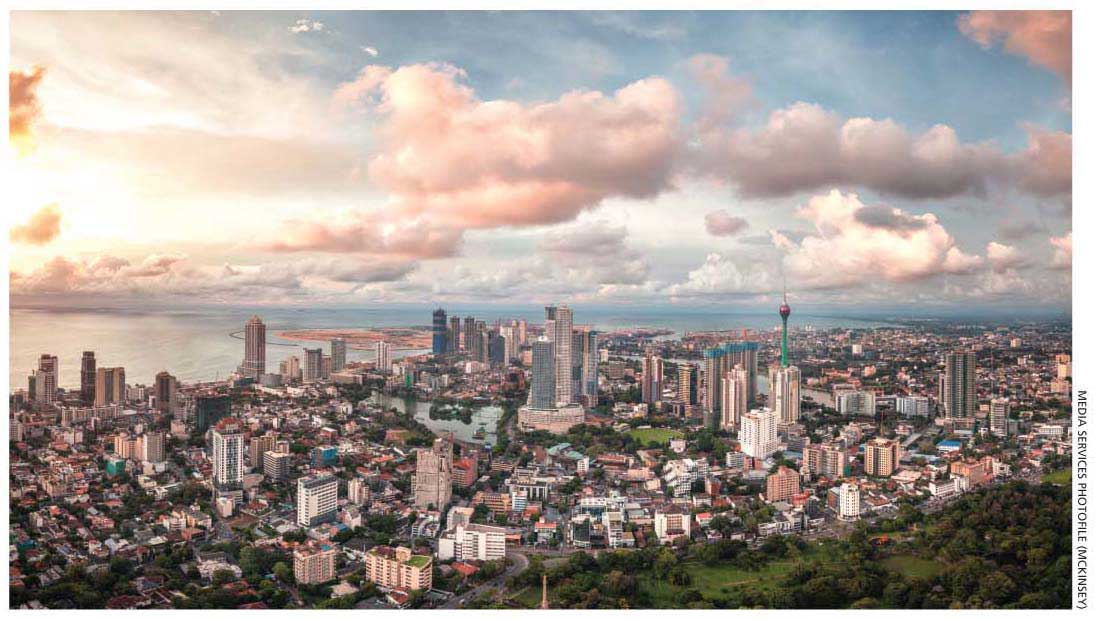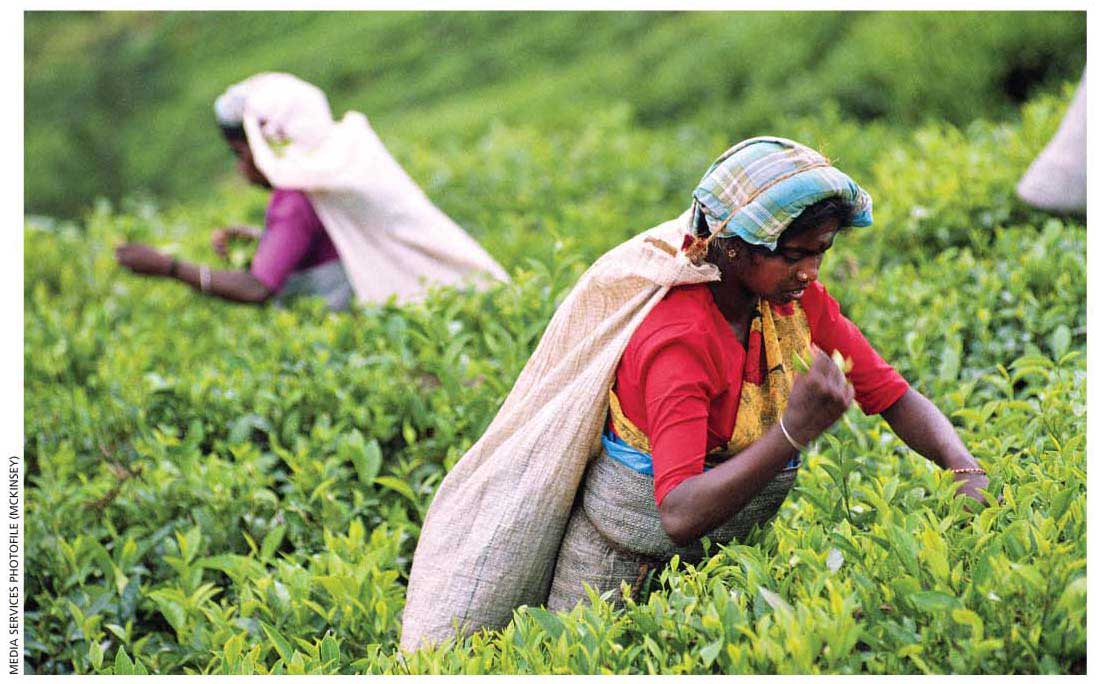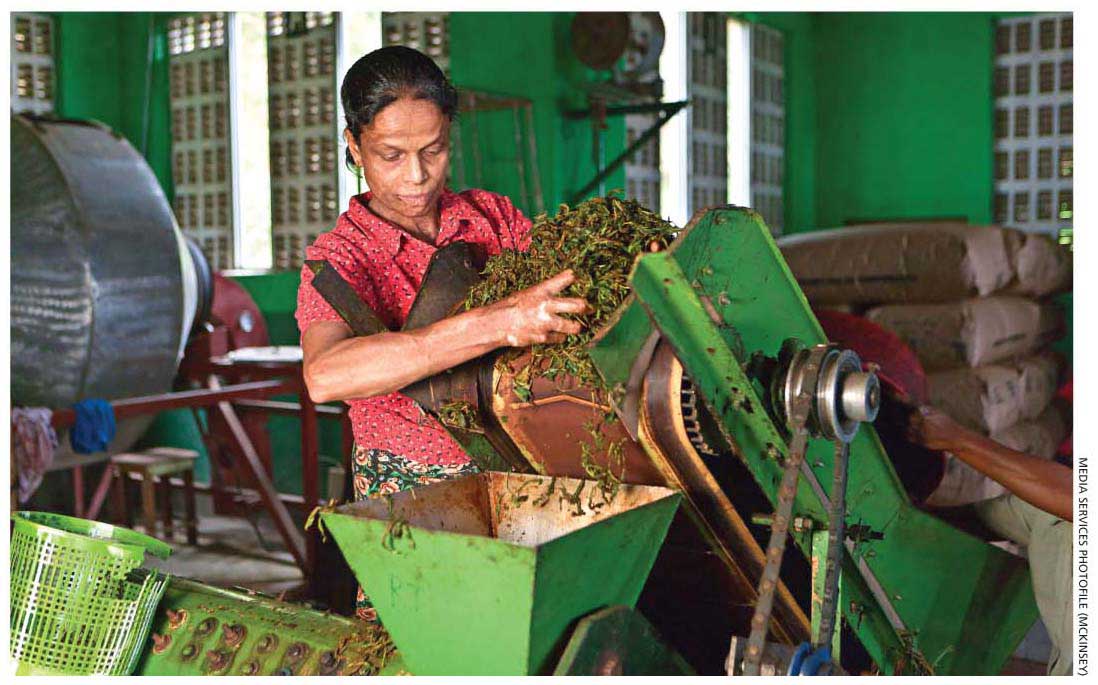McKINSEY
Q: Since McKinsey is an advisor and counsellor for many of the world’s most influential businesses and institutions, what would be the necessary steps for Sri Lanka to return to long-term growth, in your view?
A: The first and most important step would be the successful completion of the IMF programme to restore the country’s macroeconomic stability and ultimately help unlock Sri Lanka’s growth potential. It is encouraging to see the recent announcement from the International Monetary Foundation’s board about the approval of the new Extended Fund Facility (EFF) arrangement.
When it comes to restoring debt sustainability, it’s not enough for the total debt content to reduce. The debt servicing element must decrease as well since 70 percent of Sri Lanka’s interest payments are on domestic debt. Merely re-profiling the international component or taking haircuts – while very helpful – is not enough.
Furthermore, setting up a fiscal apparatus that is both wide and progressive can provide the platform from which to start looking at opportunities to spur a growth curve.
The next important aspect would be to structurally change some of the inefficiencies in the economy to transform state owned enterprises (SOEs) so that they operate efficiently – but not necessarily through privatisation alone.
Looking to other countries for good practices on SOE transformation – Malaysia for instance, offers a business model of government linked companies that are hybrid and can run efficiently.
Finally, I believe strong institutions are needed in Sri Lanka. Any modern, successful economy has independent and strong institutions. A robust central bank, and separation of power between the executive and judiciary are necessary safeguards so that in the event of a regime change, the systems and frameworks that help ensure economic stability aren’t undermined.
Evaluating the responses from China, India, the Paris Club and the IMF, it’s clear that they are very supportive of Sri Lanka’s recovery from the economic and humanitarian crisis. The country needs to leverage this momentum without losing ground.
Q: Sri Lanka always seems to fall short of realising its true potential. What can be done differently this time round to ensure this doesn’t happen again?
A: Despite the headwinds Sri Lanka has faced over the last 30 years, its economy has ticked along, providing a glimpse into its inherent resilience. To achieve its full potential however, the nation needs to do what it does well even better. It should not always be about the next new thing.
Take the fact that Sri Lanka has been anointed one of 23 locations to visit in 2023 by Forbes. Yet, the main tourist offerings continue to be Yala, Kandy, Sigiriya and the beaches, which over time could come under stress.
The island has so much to offer and more of its locations can be developed into world-class tourist spots. Sri Lanka is surrounded by the ocean, rich with fertile soil and abundant crops, and a world-class tourist destination. These are natural assets that should be elevated further to the country’s advantage.
Moreover, Sri Lanka has one of the world’s best teas but seems to have made itself structurally uncompetitive in the global tea industry albeit with good intentions. The country really knows the tea business, has a rich legacy in the industry and already enjoys brand recognition for its teas. So we need to stay ahead of the game in areas we are good at.
One great opportunity at Sri Lanka’s doorstep is the presence of its giant neighbour – i.e. India – and the 1.8 billion people on the subcontinent. This is where we can build a competitive advantage and supply to the ecosystem.
Now that ties with India are being refreshed and strengthened, momentum has been created towards cooperation and commercial links. This could be Sri Lanka’s opportunity to rise with India because this could very well be the subcontinent’s decade.
Q: As a global firm operating here, what policies would you like to see to stay invested in the country?
A: I’m fortunate that the partnership I am in takes a long-term view. When we make a decision to enter a market, we’re committed to the country for the long haul as we tend to see the long-term potential of a nation beyond the short-term events that take place.
Can things be better in Sri Lanka particularly in terms of the ease of doing business? Absolutely – there is always room to improve.
Sri Lanka is a relatively small market and needs to facilitate the entry of consultants, for example. However, the local value added tax (VAT) system may not be geared for this. These are small aspects that can be simplified to enable the nation to be one of the choice locations to do business. There are already encouraging signs with the government trying to bring together the different investment agencies into a more effective, singular organisation.
The challenge to implementation could be that there may not be enough longevity for any one regime to follow through on implementation. This is where strong institutions should come in and outlast political cycles. If politics is the weather, then institutions are the climate.
Q: What is the positioning you believe Sri Lanka should occupy going ahead?
A: Where there is an existing chain of activity that leads to an end consumer and we have a natural ability to participate, I believe Sri Lanka should be doubling down. Take rubber and coconut for example, where we could be exporting value-added products.
Consider that SMEs comprise approximately 75 percent of the economy in Sri Lanka, according to the Asian Development Bank (ADB). They can be empowered to plug into global value chains but unfortunately, the lack of adequate last mile logistics, and a poor understanding of product design and communications, tend to hinder SMEs from finding global markets.
The opportunity in India is going to be immense for Sri Lanka while also attracting Indian companies to come to the island to partner with local firms. Power and energy is a great example where Sri Lanka can be a strategic partner to the subcontinent.
Additionally, the adoption of nuclear energy for power generation in Sri Lanka could be considered as India has 22 nuclear plants and one of the largest deposits of uranium in the world.
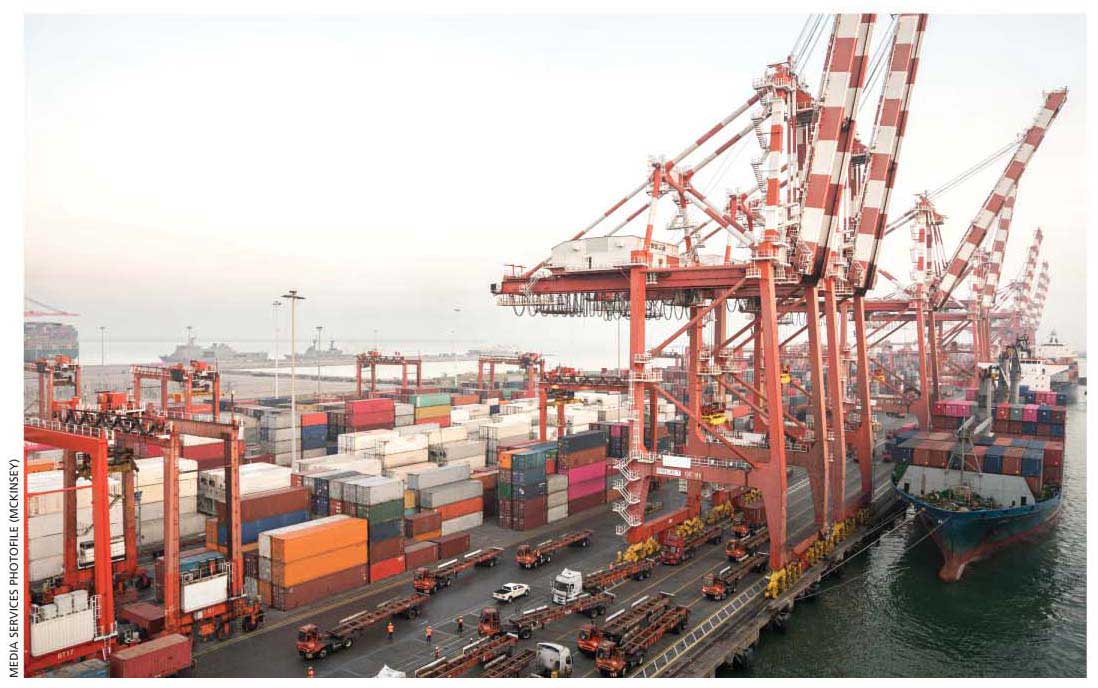
There is also an emerging technology called small-scale modular reactors (used in nuclear submarines). Presently, programmes are ongoing in the UK to be among the first to commercialise the production of these reactors. Sri Lanka could consider raising its hand to participate in the R&D and early implementation of this technology. Once it matures otherwise, the island may be towards the back of the line.
Sri Lanka also needs to recognise, capture and consolidate its strengths. Having three deep water seaports makes it an ideal destination to aggregate transhipment to and out of the subcontinent.
Simultaneously, as a nation in the midst of an energy crisis, we have to think very carefully about energy transition, and be mindful of the cost of transition on the poor and vulnerable in the country. Sri Lanka spends billions of dollars on its energy bill every year and will continue to do so unless it figures out how to do this cost-effectively. The nation can’t afford this outflow of foreign currency.
We also need to be aware that the world is deleveraging.
After enjoying 15 years of cheap money and a younger workforce, the cost of funds has gone up globally. So when we say we want foreign direct investments (FDI) to flow into Sri Lanka, we’re going to have to be quite thoughtful about the source and returns being sought.
Q: Having worked in diverse markets, what would you say is the impact on the human capital of a country that has hit rock bottom in terms of economic growth?
A: The current brain drain is unfortunate but there’s always a silver lining. South American economies have gained from substantial diaspora remittances and Sri Lanka is already seeing a similar trend.
However, for the sake of sustainable growth, we have to create an economy that makes the diaspora want to return with fresh ideas and tacit knowledge to benefit the local economy. The support for migrant workers sending remittances back home needs to be improved and these funds must be used to develop the economy.
There are also new opportunities for those who choose to stay in the nation. The champions of industry presently are the ones who stayed even though they had the option to leave – and built empires because they saw opportunities amid adversity. Likewise, there will be opportunities created in the present context and hopefully, some illustrious Sri Lankans will seize them to build lasting and impactful businesses.
A Harvard University study revealed that in the US, one in 10 is an immigrant. In mid-2020, it was one in 500 in Sri Lanka and if you don’t take into account Indians working here, then it would be one in 10,000.
What this implies is we don’t have the tacit knowledge of foreign workers coming to Sri Lanka along with the fact that there’s no path to citizenship for them here. This has to change if we are to increase the attractiveness of this nation for knowledge workers.
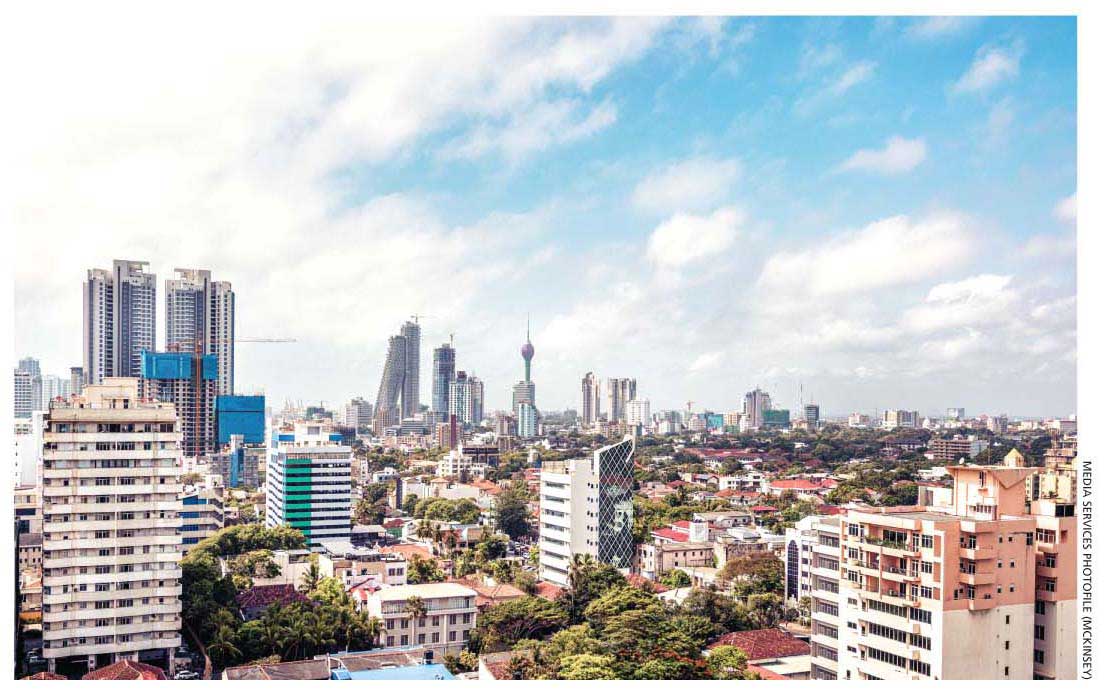
Q: What are the potential sectors you believe Sri Lanka can prioritise to accelerate its growth?
A: Sri Lanka can prioritise its existing competitive advantage in tea, rubber, coconut, tourism, apparel and high-end business process outsourcing (BPO) operations. The country can also leverage the temporary advantage of its exchange rate while it lasts. Sri Lanka also has robust financial institutions, and its financial services industry is ripe for investment and partnerships.
Agriculture and fisheries also hold much potential. Some of the world’s best tuna comes from Sri Lanka. Where agriculture is concerned, although the nation has no large land banks, it can leapfrog onto agri-tech, and use advanced technology for organic produce and so on. But Sri Lanka has to be flexible to plug competency gaps with tacit knowledge from overseas where required.
Q: How does contribution from women in the workplace factor into future growth prospects for Sri Lanka?
A: I am an advocate of the power of parity. Research has shown again and again that more women in the workforce is a positive factor.
According to ‘The power of parity: Advancing women’s equality in Asia Pacific,’ a report published by McKinsey Global Institute (MGI) – the business and economics research arm of McKinsey – women in the region continue to be concentrated in lower growth sectors and paying roles with 3.2 times more being in clerical support roles than men. Despite the increasing importance of the digital economy, there are 0.6 times fewer women in tech.
The talent pipeline also narrows for women with a drop of over 50 percent in representation from entry level to senior management.
MGI’s study showed that if Asia were to achieve parity, it would add US$ 4.5 trillion to the Asian economy every year. Sri Lanka in particular has the potential to add 20 billion dollars a year to its GDP by 2025 by bringing more women into the workplace, which would increase its current economic growth trajectory by about 14 percent.
To achieve this, structural changes are needed through role modelling by making it natural to have women lead in all sectors. Sri Lanka has had an enabling environment with the first female prime minister in the world, and should enhance the protection of women, and ensure frameworks and systems are in place to support them at every stage such as when entering or reentering the workforce post-childbirth, for example.
Sri Lanka needs to do more as it has a female participation rate of only 34 percent in the workplace contributing 28 percent to the GDP despite having a female population of 52 percent. Equality in opportunities could be the country’s pillar for rapid growth following the economic crisis. Our research has shown that greater representation of women in senior corporate positions correlates to improved business performance.
Q: The World Bank estimates that the digital economy contributes to more than 15 percent of global GDP and in the past decade, it has been growing at two-and-a-half times faster than physical world GDP. What digital path should Sri Lanka plug into?
A: In comparison with other Asia-Pacific emerging markets, Sri Lanka exhibits strengths in connectivity, digital marketing, investment in digital initiatives and the ability to move quickly. Sri Lankan companies across all industries will have to enhance their digital maturity.
Instead of trying to compete with global giants in the supply of digital where we lose out due to scale, we could instead generate demand for digital by democratising data. Sri Lankan institutions can first and foremost ensure the integration of digital priorities into the overall business strategy.
Q: What is the basis for your optimism about Sri Lanka’s growth prospects?
A: I am an eternal optimist. Although I’ve had the privilege of working in six continents, I believe what Sri Lanka offers in terms of lifestyle as an island paradise is incomparable.
We are in one of the best spots on the entire planet when it comes to commercial enterprise – next to one of the top five sea lanes, equidistant from Southeast Asia and the Middle East, and a stone’s throw away from the population of 1.8 billion people on the Indian subcontinent.
Moreover, if you look at our population pyramid, it has a little bulge at the bottom – that’s the group of people who are going to want to buy and invest – and a group at the top, which is going to save money. So we have the ideal growth cycle going.
However, we must be cognisant of the fact that we’re in an era of change. The world is moving from being unipolar to multipolar where the world of digital is already making way for transversal technologies.
The world is in flux and against this backdrop, Sri Lanka must be agile and perceptive enough to plug into the value chain of this evolution. As such, the nation needs to ponder which of those trends are relevant for its economy and where it can play. More crucially, we can’t be everything to everyone.
This is a fragile yet exciting time for Sri Lanka to rise again.
– Compiled by Yamini Sequeira
Telephone: 7610200-399 | Email: ASO_Media@mckinsey.com | Website: www.mckinsey.com/lk


